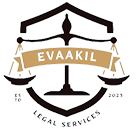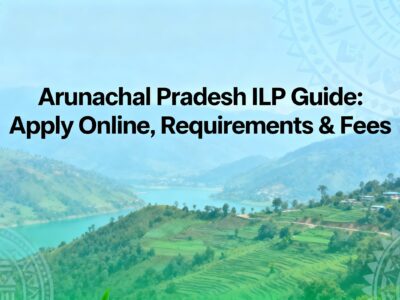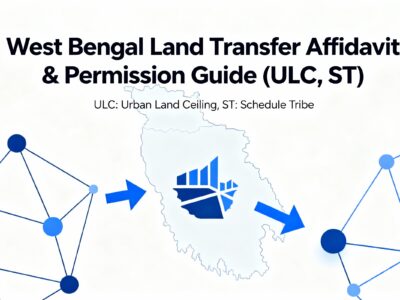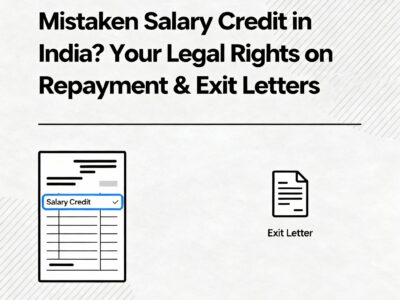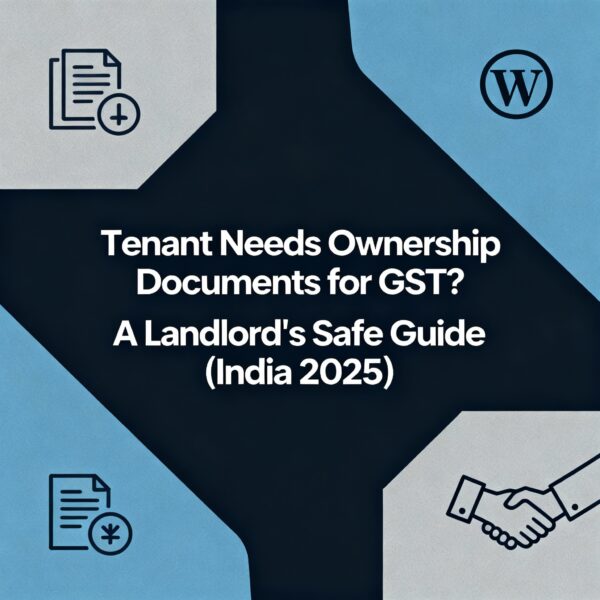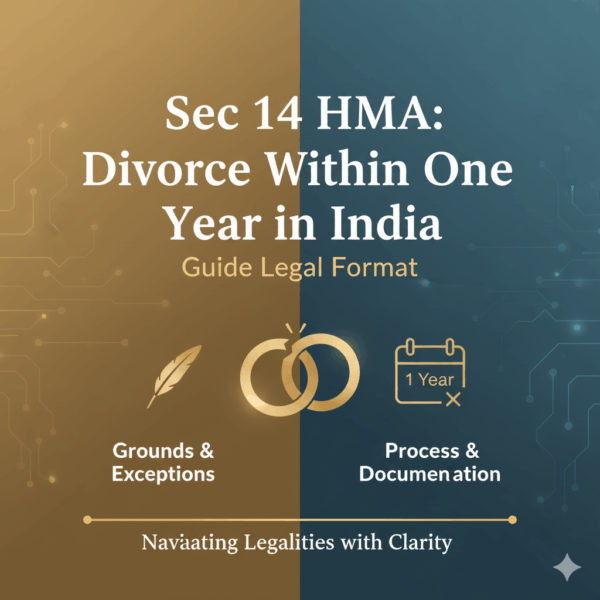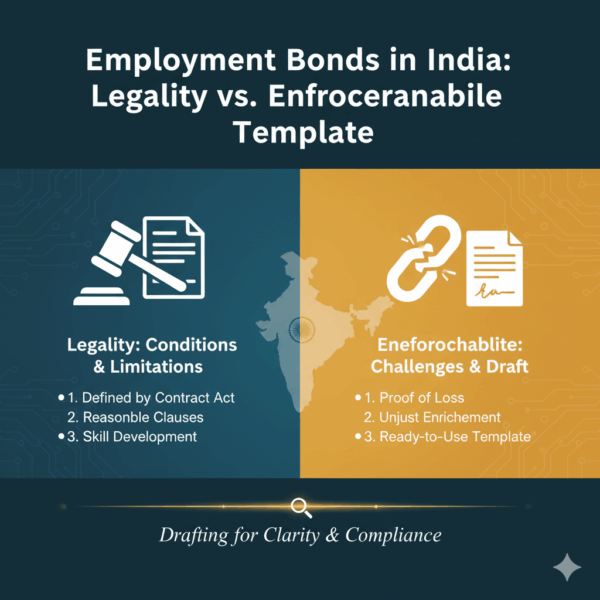Motor Accident Law
Updated: October 2025
Who Pays? A Vehicle Owner’s Liability in Indian Motor Accident Law When Someone Else is Driving
This analysis explains the legal responsibilities of a registered vehicle owner in India when an accident happens while another person is driving. The law creates a complex but clear set of rules for who pays compensation.
Key Legal Findings
Civil Duty to Pay is Near-Absolute
The registered owner has a civil duty to pay third-party victims. This responsibility exists regardless of who was driving. The RTO record determines who is the “owner” for compensation claims.
Criminal Guilt is Not Transferred
An owner is *not* held criminally responsible for the driver’s actions (like imprisonment for rash driving). Criminal guilt is personal. An owner only faces criminal charges in rare cases of active encouragement, like permitting a drunk person to drive.
The ‘Pay and Recover’ Risk
The biggest financial risk is breaking the insurance policy. If the driver is unlicensed or drunk, the insurer must first pay the victim. Then, the insurer has the right to recover that *entire amount* *personally* from the owner.
Two Types of Responsibility: Civil vs. Criminal
An accident starts two separate legal processes. The first is criminal law, to punish the driver. The second is civil law, to compensate the victim. These two processes are parallel and independent.
Driver’s Criminal Responsibility (Under IPC)
The person physically driving faces criminal charges based on their actions and mental state (rashness or negligence).
- Section 279: Rash Driving. Punishes the dangerous act itself.
- Section 337: Causing simple injury by a rash act.
- Section 338: Causing serious injury by a rash act.
- Section 304A: Causing death by a rash or negligent act.
Owner’s Civil Responsibility (Under MV Act)
The registered owner faces the financial duty to pay compensation, regardless of who was driving.
- Registered Owner: The law targets the name on the RTO certificate for paying claims.
- Section 164 (No-Fault): Owner must pay fixed compensation (₹5 Lakh for death) *without* any proof of driver’s fault.
- Master-Servant: Owners are responsible for the actions of their employees during work.
The Driver’s Criminal Charges
The criminal blame for an accident almost always falls only on the driver. The charges depend on the driver’s actions and the outcome of the accident. An accident itself does not prove a crime. The police must prove the driver was “rash or criminally negligent.”
| IPC Section | Offense | Description | Punishment |
|---|---|---|---|
| Section 279 | Rash Driving | Driving on a public way so rashly or negligently as to endanger human life. | Up to 6 months jail, or fine, or both. |
| Section 337 | Causing Hurt | Causing simple hurt by a rash or negligent act. | Up to 6 months jail, or fine, or both. |
| Section 338 | Causing Grievous Hurt | Causing serious hurt (like fracture) by a rash or negligent act. | Up to 2 years jail, or fine, or both. |
| Section 304A | Causing Death by Negligence | Causing a person’s death by a rash or negligent act. | Up to 2 years jail, or fine, or both. |
The Owner’s Limited Criminal Responsibility
An owner is not criminally punished for the driver’s bad driving. An owner’s criminal risk is very limited and requires active participation. This is known as *abetment*. The main risk is Section 188 of the Motor Vehicles (MV) Act. This section makes an owner criminally guilty if they *abet* (permit) someone to drive dangerously, or, most importantly, while drunk or on drugs. If an owner knows a person is drunk and still gives them the car keys, the owner can be punished with the same penalties as the drunk driver.
The Owner’s Primary Civil Duty to Pay Compensation
This is the owner’s main legal burden. Indian motor accident law is a social welfare law. Its first goal is to make sure victims get paid. To do this, the law fastens the duty to pay to the one person who is easiest to identify and who is legally required to have insurance: the **registered owner**.
The person whose name is on the RTO registration certificate is the “owner” in the eyes of the law. This rule protects victims. Victims do not need to figure out who was driving or what private deals were made. They file a claim against the name on the registration.
The “No-Fault” Rule: Section 164 of the MV Act
The 2019 amendment to the law made this even more strict. Section 164 creates a “no-fault” system. Under this section, the owner or their insurer *must* pay a fixed amount:
- ₹ 5,00,000 (Five Lakh) in case of death.
- ₹ 2,50,000 (Two and a Half Lakh) in case of grievous hurt.
To get this money, the victim *does not need to prove the driver was negligent*. They only need to prove the accident happened and involved the owner’s vehicle. This makes it a near-automatic payment duty for the owner (and their insurer).
CRITICAL RISK: Liability After Selling Your Car
The most dangerous situation for an owner is selling the vehicle but *failing to transfer the registration* at the RTO. Even if you have been paid in full and handed over the car, you are still the “registered owner” accordingto the law.
If the new buyer has an accident, *you* and *your* insurance are legally responsible for paying the victim’s compensation. This “phantom liability” can last for years, until the registration is formally transferred.
The Insurance Shield and the ‘Pay and Recover’ Sword
The entire system works because third-party insurance is mandatory. The insurance policy is a contract. The insurer agrees to pay for the liabilities of the owner. But this shield can fail if the owner breaks the rules of the policy.
How Insurance Responds to a Claim
Scenario 1: The Safe Outcome (Policy Rules Followed)
(Owner is Protected)
Scenario 2: The ‘Pay and Recover’ Risk (Policy Broken)
(Owner Pays Everything)
This second scenario is the “Pay and Recover” doctrine. The courts created it to solve a conflict. The insurer has a right to deny a claim if the owner broke the contract (like by letting a drunk person drive). But the innocent victim has a right to be paid quickly.
The “Pay and Recover” rule solves this:
1. PAY: The court orders the insurer to pay the victim first. The victim is protected.
2. RECOVER: The court then gives the insurer the right to sue the *owner* to get all that money back.
The owner’s only defense is to prove they took *reasonable care*. For example, if a driver showed the owner a fake license that looked real, the owner might not be forced to pay. But if the owner *never bothered to check* for a license, they will be found negligent and will have to pay.
Visualizing the Owner’s Financial Outcome
This chart shows the most likely financial outcome for the *owner* in different driver scenarios. “Protected” means the insurer pays. “Personal Liability” means the owner must pay the insurer back.
Analysis of “Different Driver” Scenarios
How do these rules apply in real life? Use the filters below to see the owner’s responsibility in common situations.
Scenario 1: Friend or Family Member
This is the most common “permissive use” case. The owner allows a friend or relative to borrow the car.
- Criminal: The *driver* (friend) is fully responsible for any rash driving charges. The owner is safe, *unless* they knew the friend was drunk.
- Civil: The *owner* is fully responsible to the victim as the registered owner.
- Insurance: Full Protection. Standard policies cover the owner and anyone driving with their permission. The insurer pays the victim. The owner is safe.
Scenario 2: Employee-Driver
This is the classic “master-servant” relationship. The employee is driving for work.
- Criminal: The *driver* (employee) faces all criminal charges.
- Civil: The *owner* is responsible, both as the registered owner and as the “master” of the employee.
- Insurance: Full Protection. This is a standard use. The insurer pays the claim. (Note: If the employee was on a personal trip, a “frolic,” the owner is *still* liable to the victim, but the insurer might then try to recover the money from the owner).
Scenario 3: Unlicensed or Drunk Driver
This is the highest-risk situation for an owner. The owner permitted someone to drive who was not legally allowed to.
- Criminal: The driver faces severe charges. The *owner* also faces *direct criminal charges* for abetment (Section 188) if they knew the driver was drunk.
- Civil: The *owner* is fully responsible to the victim.
- Insurance: ‘PAY AND RECOVER’. This is the classic trigger. The insurer *must* pay the victim, but then has the right to sue the *owner* to recover the entire amount.
Scenario 4: Valet or Mechanic (Bailee)
When you give keys to a hotel valet or service center, they become a “bailee,” legally responsible for your car’s care.
- Liability: Both the *owner* (as registered owner) and the *bailee* (hotel/garage) are legally responsible.
- Insurance: Pay and Subrogate. In practice, the victim will sue the owner’s insurance. The owner’s insurer will *pay* the victim. Then, the insurer will *sue the hotel/garage* (the bailee) to get its money back. The owner is ultimately protected, but their policy is the first to respond.
Scenario 5: Stolen Vehicle
The vehicle is stolen, and the thief causes an accident.
- Liability: The owner is NOT liable. The act of theft breaks the chain of control.
- Action: The owner *must* file a First Information Report (FIR) with the police immediately. This FIR is the legal proof that severs the owner’s responsibility.
- Insurance: The owner has no liability. The court may order the insurer to pay the victim and then try to recover the money from the *thief*.
Scenario 6: Unauthorized Minor (Not Stolen)
A minor relative takes the keys without permission and has an accident. This is *not* treated as theft.
- Liability: The owner is held responsible for *negligently* failing to secure the keys from a foreseeable user (the minor).
- Insurance: ‘PAY AND RECOVER’. The law sees this as the owner’s fault. The insurer will pay the victim and then recover the *entire amount* from the owner for their negligence.
| Driver Scenario | Owner’s Civil Duty to Victim? | Insurance Outcome for Owner |
|---|---|---|
| Friend / Family | Yes | Full Protection (Insurer Pays) |
| Employee (On Duty) | Yes | Full Protection (Insurer Pays) |
| Unlicensed / Fake License | Yes | Pay and Recover (Owner Pays) |
| Drunk Driver | Yes | Pay and Recover (Owner Pays) |
| Valet / Mechanic | Yes | Protected (Insurer pays, then sues valet) |
| Stolen Vehicle (with FIR) | No | No Liability |
| Unauthorized Minor (Keys left out) | Yes | Pay and Recover (Owner Pays) |
Strategic Recommendations for Vehicle Owners
Based on this legal analysis, here are six essential actions to protect yourself from financial risk.
1. When Selling Your Car
The sale is *not* final until the RTO transfer is done. Proactively follow up with the buyer. Get proof of the transfer to end your “phantom liability.”
2. When Loaning Your Car
Before lending your car to *anyone* (friend or family), *personally check their original, valid driving license*. This is your only defense against a “Pay and Recover” claim if the license turns out to be fake.
3. For Employees
Have a written company policy that clearly forbids personal use of company vehicles and driving under the influence. This helps define the “course of employment.”
4. When Servicing (Valets/Mechanics)
Use reputable, insured businesses. While the law protects you from “owner’s risk” signs, it is much cleaner if the bailee has their own insurance to respond to a claim.
5. Secure Your Keys
Secure your car keys at all times. The law treats “stolen” (where you are a victim) very differently from “unauthorized use by a minor” (where you are negligent). The second case will make you personally liable.
6. If Your Car is Stolen
File a police FIR *immediately*. This legal document is what officially severs your civil liability for any future accidents caused by the thief.
Templates & Checklists for Owners
These simple formats can help you document your reasonable care and manage your risk.
Template 1: Vehicle Sale Agreement (Key Clause)
Include a clause like this in your sale agreement and delivery note.
The Buyer, [Buyer's Name], agrees to apply for and complete the transfer of vehicle registration (RC) at the relevant RTO for vehicle [Make, Model, Reg. No.] within 14 days of this agreement.
The Buyer takes full and sole responsibility for any and all traffic violations, accidents, third-party claims, and legal liabilities related to the vehicle from the date and time of this delivery.
Template 2: Checklist for Loaning Your Car
Keep a simple record (even a text or email) to prove you were careful.
- I have personally seen the *original* driving license of [Driver’s Name].
- License Number: [DL Number]
- Valid Through: [Expiry Date]
- I have confirmed the driver is not under the influence of alcohol or drugs.
- Vehicle is loaned for the specific purpose of [Purpose] from [Start Time] to [End Time].
Frequently Asked Questions (FAQ)
Am I criminally responsible if my friend crashes my car?
No. Your friend (the driver) is the only one who faces criminal charges for rash driving. You are only criminally responsible if you *abetted* the crime, for example, by telling them to “run the red light” or by giving them the keys when you knew they were drunk.
What happens if I sell my car but don’t transfer the RC?
You remain 100% legally responsible for all future accidents, claims, and traffic tickets associated with that car. The law only recognizes the “registered owner.” You must ensure the buyer completes the transfer to end your liability.
My employee took a personal trip and had an accident. Am I liable?
Yes. Even if the employee was on a “frolic of his own,” you are still the *registered owner*. The victim has a right to claim compensation from you under the MV Act. This statutory liability is separate from “course of employment.” Your insurer will pay the victim, but may then try to recover the money from you for this policy breach.
What exactly is ‘Pay and Recover’ in simple terms?
It means your insurance policy is voided, but only *after* your insurer pays the victim. Because you broke the policy (e.g., let an unlicensed person drive), your insurer has the right to sue you to get all the compensation money back. You end up paying the entire claim personally.
Is a valet responsible for crashing my car?
Yes. The hotel or valet service is a “bailee” and is legally responsible for damage caused by their negligence. In practice, the victim will likely claim from your insurance first (as you are the registered owner). Your insurer will pay the victim, and then use its right of “subrogation” to sue the valet’s insurance to get the money back. You are protected, but it’s important to use reputable services.
